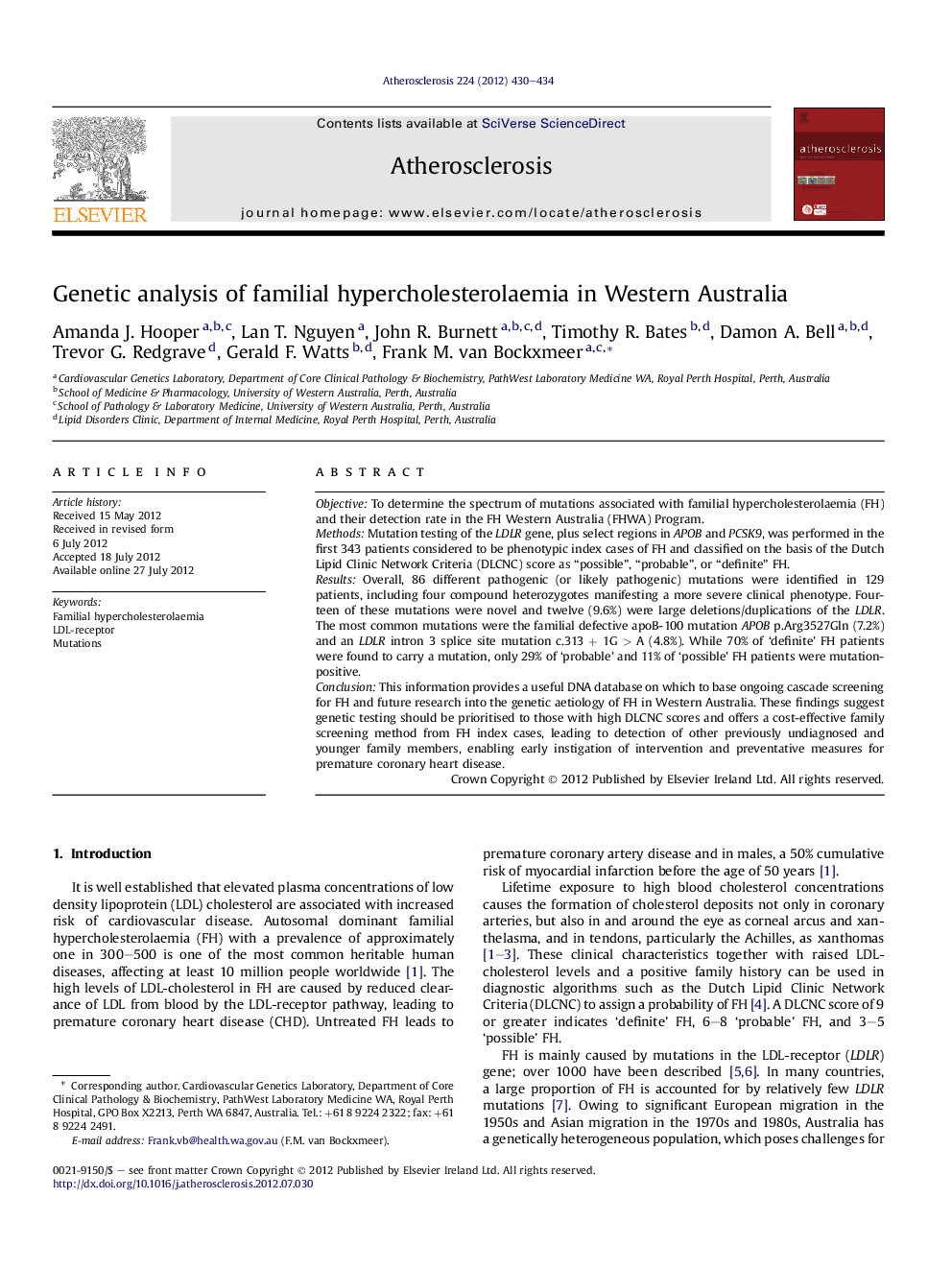| Article ID | Journal | Published Year | Pages | File Type |
|---|---|---|---|---|
| 5947211 | Atherosclerosis | 2012 | 5 Pages |
ObjectiveTo determine the spectrum of mutations associated with familial hypercholesterolaemia (FH) and their detection rate in the FH Western Australia (FHWA) Program.MethodsMutation testing of the LDLR gene, plus select regions in APOB and PCSK9, was performed in the first 343 patients considered to be phenotypic index cases of FH and classified on the basis of the Dutch Lipid Clinic Network Criteria (DLCNC) score as “possible”, “probable”, or “definite” FH.ResultsOverall, 86 different pathogenic (or likely pathogenic) mutations were identified in 129 patients, including four compound heterozygotes manifesting a more severe clinical phenotype. Fourteen of these mutations were novel and twelve (9.6%) were large deletions/duplications of the LDLR. The most common mutations were the familial defective apoB-100 mutation APOB p.Arg3527Gln (7.2%) and an LDLR intron 3 splice site mutation c.313Â +Â 1GÂ >Â A (4.8%). While 70% of 'definite' FH patients were found to carry a mutation, only 29% of 'probable' and 11% of 'possible' FH patients were mutation-positive.ConclusionThis information provides a useful DNA database on which to base ongoing cascade screening for FH and future research into the genetic aetiology of FH in Western Australia. These findings suggest genetic testing should be prioritised to those with high DLCNC scores and offers a cost-effective family screening method from FH index cases, leading to detection of other previously undiagnosed and younger family members, enabling early instigation of intervention and preventative measures for premature coronary heart disease.
⺠This is the first report of the mutation spectrum of FH in Australia. ⺠343 unrelated patients with phenotypic FH were assessed for variants in LDLR, APOB and PCSK9. ⺠86 mutations were identified in 129 patients - 16% were novel & 10% MLPA variants. ⺠The most common mutation was the FDB mutation APOB p.Arg3527Gln (7.2%). ⺠70% of 'definite' FH, 29% 'probable' and 11% 'possible' were mutation-positive.
